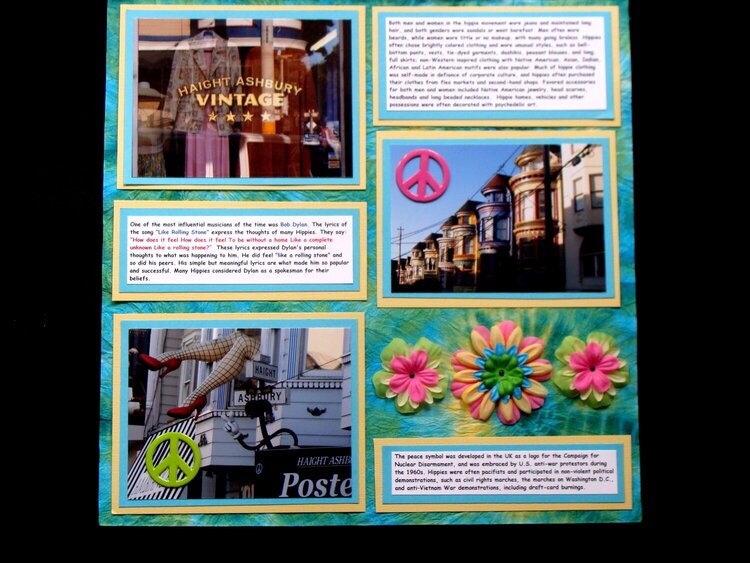

 Give a Cheer
Give a Cheer
The peace symbol was developed in the UK as a logo for the Campaign for Nuclear Disarmament, and was embraced by U.S. anti-war protestors during the 1960s. Hippies were often pacifists and participated in non-violent political demonstrations, such as civil rights marches, the marches on Washington D.C., and anti–Vietnam War demonstrations, including draft-card burnings.
---
Both men and women in the hippie movement wore jeans and maintained long hair, and both genders wore sandals or went barefoot. Men often wore beards, while women wore little or no makeup, with many going braless. Hippies often chose brightly colored clothing and wore unusual styles, such as bell-bottom pants, vests, tie-dyed garments, dashikis, peasant blouses, and long, full skirts; non-Western inspired clothing with Native American, Asian, Indian, African and Latin American motifs were also popular. Much of hippie clothing was self-made in defiance of corporate culture, and hippies often purchased their clothes from flea markets and second-hand shops. Favored accessories for both men and women included Native American jewelry, head scarves, headbands and long beaded necklaces. Hippie homes, vehicles and other possessions were often decorated with psychedelic art.
---
One of the most influential musicians of the time was Bob Dylan. The lyrics of the song "Like Rolling Stone" express the thoughts of many Hippies. They say: “How does it feel How does it feel To be without a home Like a complete unknown Like a rolling stone?” These lyrics expressed Dylan's personal thoughts to what was happening to him. He did feel "like a rolling stone" and so did his peers. His simple but meaningful lyrics are what made him so popular and successful. Many Hippies considered Dylan as a spokesman for their beliefs.
No products have been added to this project.
Thanks for spreading positivity!
September 03, 2011
August 29, 2011
August 28, 2011
August 28, 2011
August 26, 2011
August 23, 2011
August 22, 2011
August 22, 2011
August 22, 2011
August 22, 2011
August 21, 2011
August 21, 2011
August 21, 2011
August 21, 2011